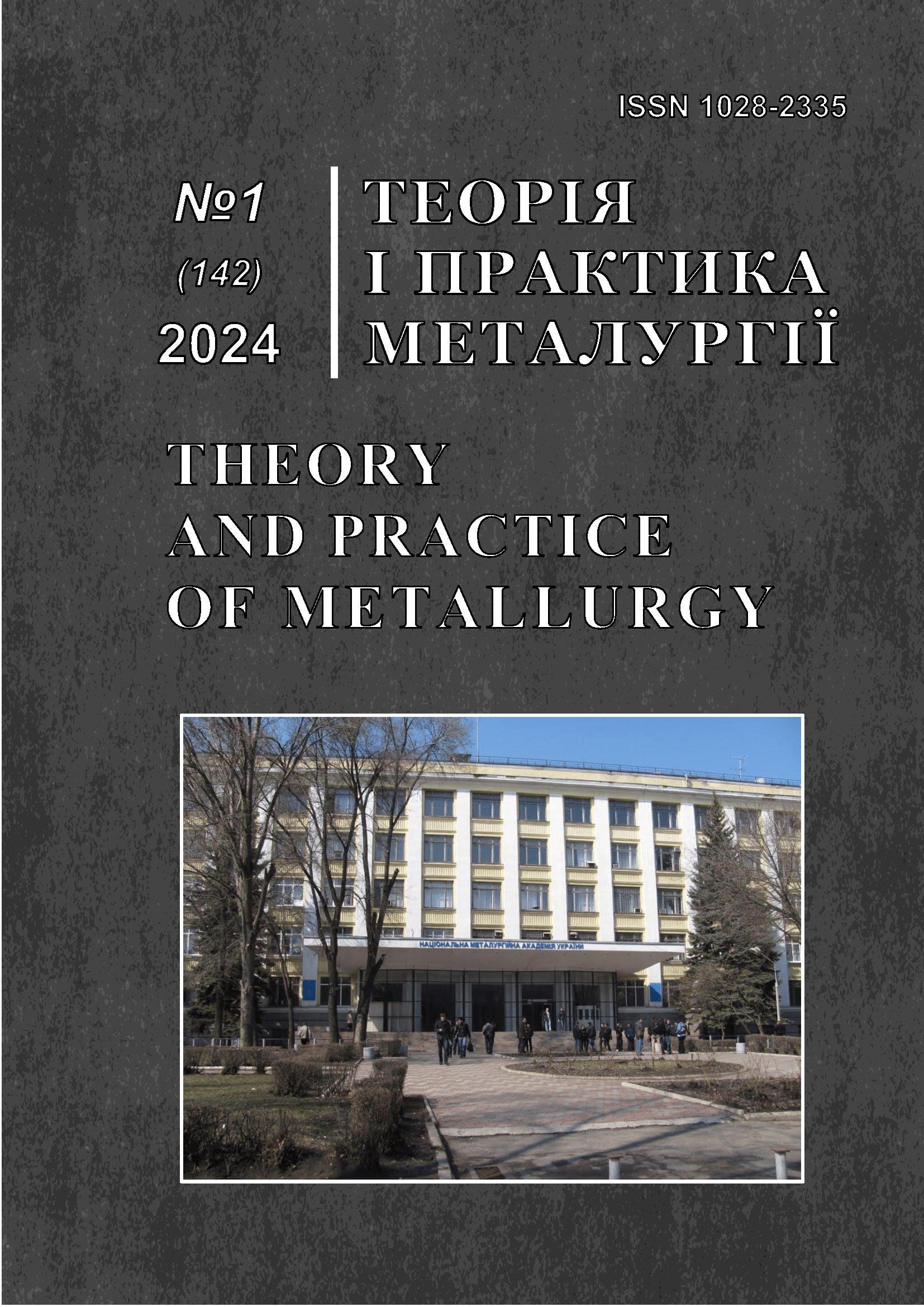Investigation of hydrodynamic processes of a ladle bath when blown through bottom blower devices
DOI:
https://doi.org/10.15802/tpm.1.2024.03Keywords:
ladle-furnace installation, blowout spot, physical modeling, bubbling zone, inert gas purgeAbstract
The object of study is the hydrodynamic processes of the ladle bath during blowing through bottom blowers. The purpose of the study is to establish the basic principles of the bubbling zone formation and its effect on the slag layer, as well as to evaluate the efficiency of non-metallic inclusions removal during out-of-furnace steel treatment at the ladle-furnace unit. The state of the art of out-of-furnace steel treatment at the ladle-furnace unit has been studied, which has shown that the efficiency of this unit is significantly influenced by blowing, including the location of bottom blower blocks and the intensity of mass transfer. Based on the analysis of the literature, an experimental methodology was developed and a laboratory setup for physical modeling on a cold model was created. Mathematical models have been created on the basis of which the influence of technological factors such as blowing modes, location of blowing devices, slag height on neutral gas consumption and, in turn, on changes in material and energy consumption of steel during out-of-furnace treatment can be described. It is determined that an increase in the blowing intensity leads to an increase in the efficiency of non-metallic inclusions removal due to a larger bubbling zone, in particular, the percentage of inclusions removed increases from 8% at 100 l/min to 22% at 800 l/min of gas flow. In addition, the influence of various parameters, such as the location of the blowdown blocks, on the interaction of the gas flow with metal and slag, as well as their impact on the formation of the blowdown spot and the temperature of the metal bath is described. The results of physical modeling and mathematical models make it possible to optimize the processes of out-of-furnace steel treatment, which contributes to improving the quality of finished products.
References
Velychko, O. H., Stoianov, O. M., Boichenko, B. M., & Niziaiev, K. H.. (2016). Tekhnolohii pidvyshchennia yakosti stali. Seredniak T.K.
olkova, O. I., Riabov, D. Yu., & Sheller, P. R. (2009). Utvorennia hazovoho strumenia ta rozryv shlakovoho sha-ru pid chas produvky ridkoi stali hazom u kovshi pozapichnoi obrobky. Tekhnika teplofizyka ta promyslova teploenerhetyka, (1), 46-52
Smirnov, A., Eronko, S., Kovalenko, I., & Giessen, R. (2006). Optimization of argon-injection process parameters for ladle treatment of steel. EOSC, 5th European Oxygen Steelmaking Conference, (5), 272-279
Maruoka, N., Lazuardi, F., Maeyama, T., & Nogami, H. (2008). Influence of bottom stirring conditions on gas-liquid reaction rate. Scanmet, 3rd International Conference on Process Development in Iron and Steelmaking, 449-458
Conejo, A. N., Mishra, R., & Mazumdar, D. (2019). Effects of nozzle radial position, separation angle, and gas flow partitioning on the mixing, eye area, and wall shear stress in ladles fitted with dual plugs. Metallurgical and Materials Transactions. 1490-1502. https://doi.org/10.1007/s11663-019-01546-8
Tassot, P., & Reichert N. (2010). Ways of improving steel quality in the Tundish. Revure de Metallurgie, (107), 175-185
Fruehan, R. J. The Making, shaping and treating of steel. In: Steel making and refining, Vol. 2, 125-133
Teng L., Ljungqvist P., Meador M., Andersson J., Hackl H., & Eriksson J.-E. (2016). Performance test results of ArcSave® technology in electric arc furnace steelmaking. In: 5th International Conference on Process Development in Iron and Steelmaking, 12-15 June 2016
Wang, L. T., & Zhang, Q. Y. (2005). ISIJ Int., 45(8),1138-1144
Ukrainska Asotsiatsiia Staleplavylnykiv. Informatsiinyi portal pro chornu ta kolorovu metalurhiiu. https://uas.su/books/2011/minizavod/32/razdel32.php
Pribulova, A. (2012). Influence of blowing of argon on the cleanness of steel. Archives of Foundry Engineering, (12),91-94
Chychkarev, E. A., Trotsan, A. Y., Kazachkov, E. A., & Rudakova, S.H. (2002). Barbotazhne peremishuvannia ta mekhanizm zsvoiennia kaltsiia pry obrobtsi staly v kovshi poroshkovym drotom. Visnyk pryazovskoho derzhavnoho tekhnichnoho universytetu, (12), 11-15
Sano, M., & Mori K. (1983). Model of circulation flow in molten metal for the special case of bath bubbling and its application to gas injection processes. Injection Metallurgy – 83, 124-134
Kostetskyi, Yu .V., & Mach, A. V. (2011). Doslidzhennia efektyvnosti protsesu flotatsii nemetalevykh vkliu-chen bulbashkamy arhonu. Nauk. pr. Donets. nats. tekhn. un-tu. Ser. Metalurhiia, 13, 65-76
Downloads
Published
How to Cite
Issue
Section
License
Copyright (c) 2024 Ruban V.O., Stoyanov O.M., Musiko V.I., Shashkin T.A., Marko A.F.

This work is licensed under a Creative Commons Attribution 4.0 International License.
Authors retain copyright of the published papers and grant to the publisher the non-exclusive right to publish the article, to be cited as its original publisher in case of reuse, and to distribute it in all forms and media. Articles will be distributed under the Creative Commons Attribution 4.0 International (CC BY 4.0) licence.
Authors can enter the separate, additional contractual arrangements for non-exclusive distribution of the published paper (e.g., post it to an institutional repository or publish it in a book), with an acknowledgement of its initial publication in this journal.




